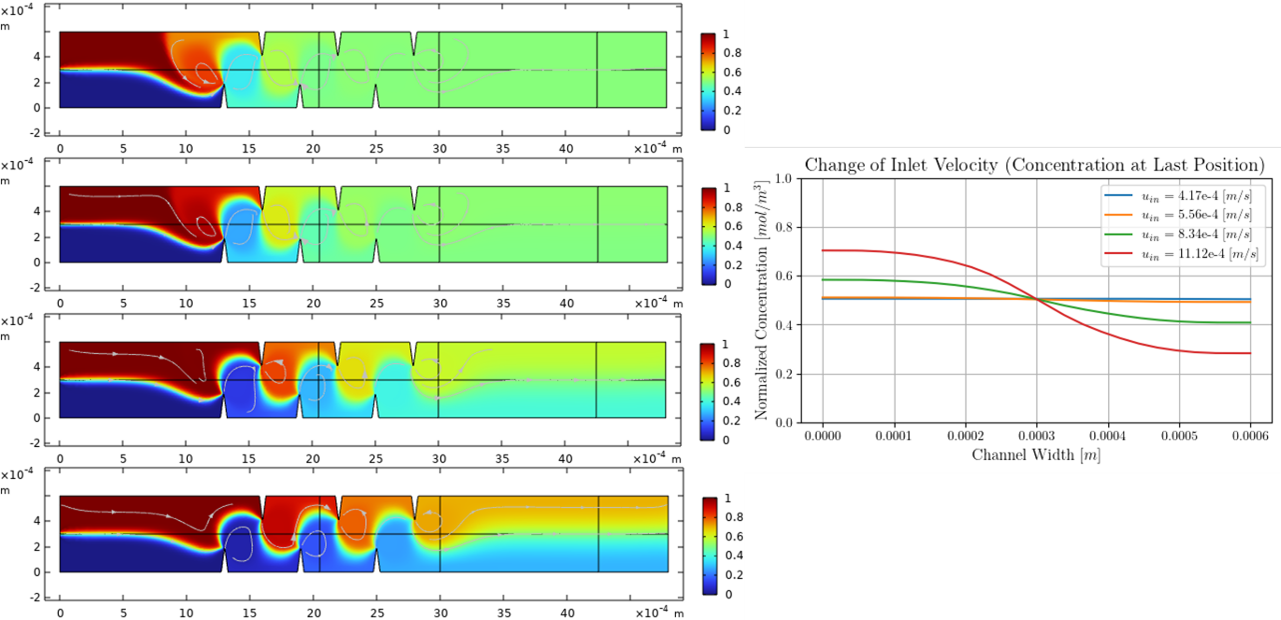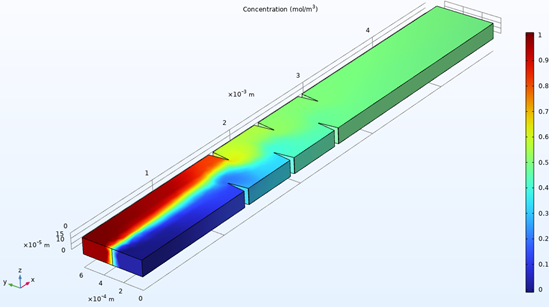General project
Acoustic Mixing
Modeling of mixing processes using acoustic streaming in lab-on-chip applications
Technical advances in miniaturization over the last few decades have resulted in the technology of so-called “lab-on-a-chip” (LOC) systems, among other things. These systems offer the possibility of automating and accelerating certain laboratory processes, e.g. in biomedical diagnostics, at the microscale. LOC systems usually consist of a network of sub-millimeter-wide channels for processing liquids. The liquids often need to be mixed, e.g. for diagnostic purposes. Due to the laminar nature of the flow in these microchannels, the mixing mechanism is determined by slow diffusion processes, which would require unsuitably long channels for homogeneous mixing. The active introduction of convection processes into the flow significantly increases the mixing efficiency.
Various publications (e.g. Nama et al., 2016) in recent years have discussed the possibility of using ultrasound in combination with sharp-edged structures in the walls of microchannels in order to achieve rapid mixing. When ultrasound is applied to the channel, the sharp edges vibrate and generate local acoustic flow phenomena, which in turn lead to significantly better mixing of the liquids. At acoustic frequencies in the low kHz range, the wavelength is much larger than the channel width, so that a uniform excitation of the channel segment and thus the sharp edges can be assumed. Building on this earlier work, we use the new acoustic flow interface in the acoustics module, as well as several other modules from Comsol Multiphysics, to simulate the mixing of two identical liquids with different species concentrations in a 2D and 3D segment of a straight microchannel with sharp, uniformly spaced, triangular edges.
The obtained simulation results show a remarkable improvement of the mixing process by introducing acoustically excited sharp edges into the LOC system. We used the simulation setup to perform parameter studies and determine the optimal geometrical properties of the mentioned sharp edges, e.g. height, tip angle and distance, as well as other process parameters such as excitation frequency and inlet velocity. In the parameter study, the height and spacing of the sharp edges were determined as critical parameters of the geometric setup. In addition, the inlet velocity was identified as a critical parameter that improves the mixing quality at lower inlet velocities. Our results are comparable to previously published results obtained from simulations using the weak formulation interface of Comsol's PDE module.


Team:
Prof. Dr. Wolfgang Wiedemair
ICE Institut für Computational EngineeringProfessor für Mathematik und Modellbildung
+41 58 257 34 81wolfgang.wiedemair@ost.ch

Participating Institutes:
ICE Institut for Computational Engineering

